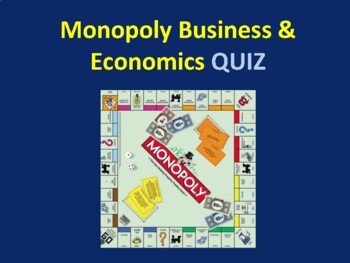Economics Lessons and Quiz from the Game of Monopoly
- PPTX
Description
The game of Monopoly has some excellent business and economics lessons to teach students. This PDF reviews several of these lessons and then assesses the student's understanding of them. Clearly written and beautifully illustrated, this can be a valuable tool in your Business, Economics, or Consumer's Math classes. (Students should play at least one full game before taking the assessment.)
I have used Monopoly for many years in my Economics classes and it never fails to bring energy and excitement to the room. Students love to negotiate, barter, and "cut secret deals" with each other. I love how much they enjoy this activity, and how much I see them learning sound business and economics principles while playing a game!
Hint: I typically use a few special rules to speed up the game, which if played by the old traditional rules, can last for days.
1.) Pass out at least a few of the properties at the start of the game.
2.) Allow and even encourage partnerships and "silent" secret deals between players.
3.) Allow for one TRICK DICE. This means that each player gets one turn (and 1 turn only) where they can pick the roll they want instead of rolling the dice. It is shocking how this one rule change alone can speed up the game by hours!
4.) Do not use $1 or $5 bills. Have students round up to the nearest $10.





